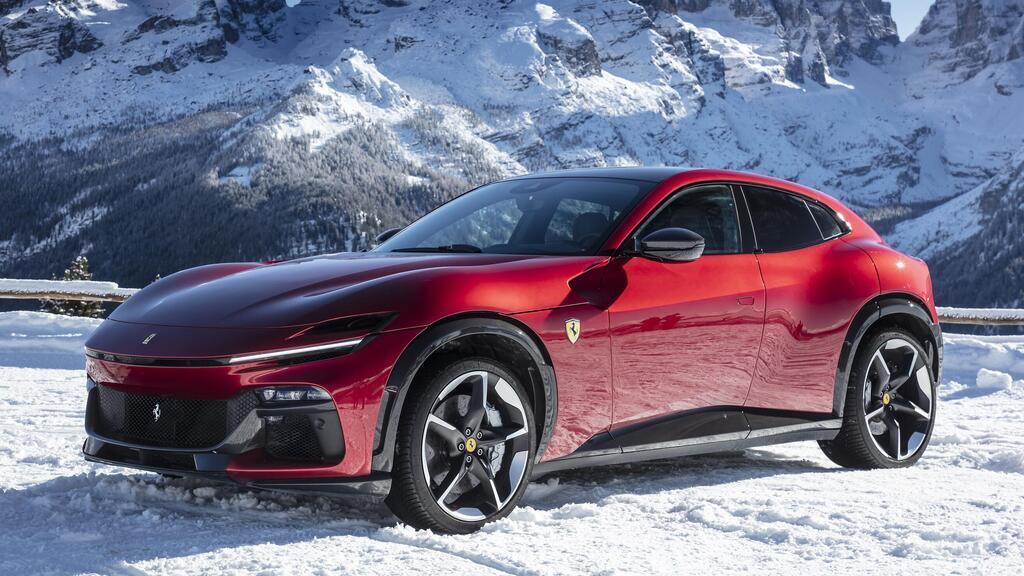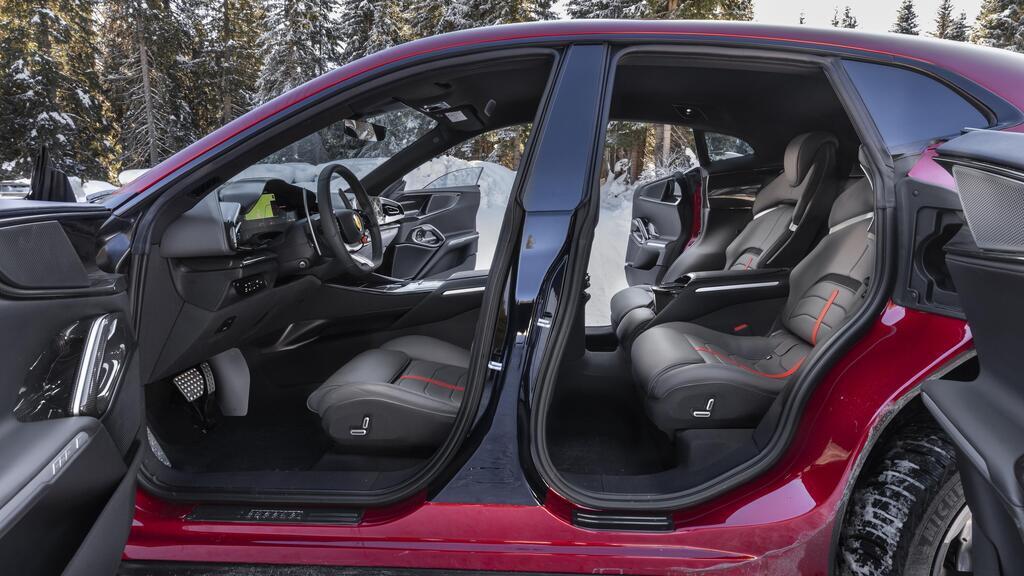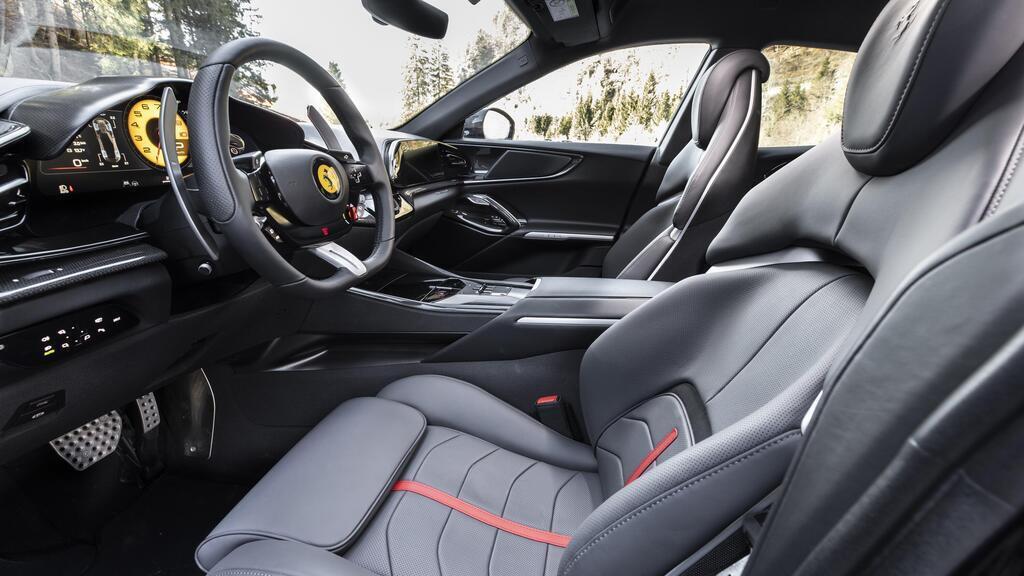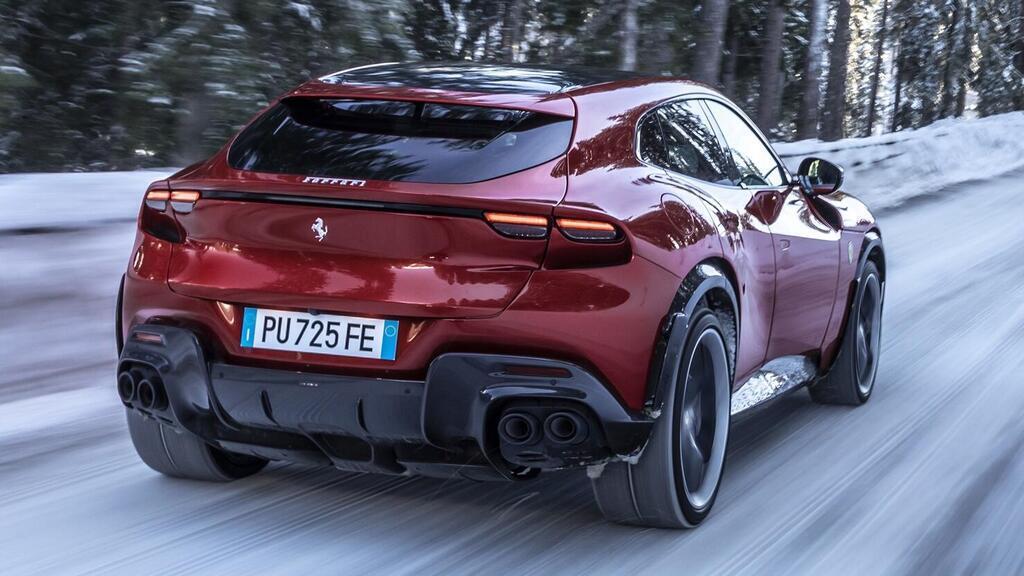Ferrari began the sale of its first-ever four-door family car, the Purosangue, in Israel. This comes a few months following our exclusive test drive of the model through the Alps. The rather sizeable vehicle takes the place of the GTC4Lusso in the local dealership, introducing a new platform and an extraordinary price range: from $1.02 million to $1.48 million.
Read more:
The dimensions are significantly larger than the typical Ferrari. Its length exceeds that of the Lusso by about 2 inches, spanning a total of about 195.67 inches. It is wider by approximately 2 inches, measuring roughly 79.92 inches in width. The wheelbase has also seen an increase, extending by about 1.18 inches, making it 118.90 inches in total. The height has increased by around 8.27 inches, standing at approximately 62.60 inches. The cargo space also has expanded by around 230 cubic inches, now offering about 18,600 cubic inches of storage. The curb weight is now about 529 pounds heavier, weighing in at around 4,480 lbs. This makes it the heaviest model ever produced in Maranello, Italy.
Uses regular fuel
Even though Ferrari has already integrated hybrid power systems into its lineup, the Purosangue boasts a 6.5-liter naturally aspirated V12 petrol engine. This engine was initially launched in the Enzo 20 yers ago, and has since been refined and enhanced across different models from the manufacturer. With an output of 725 horsepower, it takes the crown as the most potent leisure gasoline vehicle in its class, surpassing the Aston Martin DBX707.
The propulsion system channels power to the rear wheels through an eight-speed dual-clutch transmission located at the back. This setup facilitates a balanced weight distribution of 51-49 between the front and rear. Additionally, it features an electronically controlled limited-slip differential. Interestingly, the power delivery to the front wheels employs the same system found in the FF and GTC4Lusso models - a two-gear-ratio transmission linked to the engine's front end.
The vehicle's sprint to 62 mp/h clocks in at 3.3 seconds, matching the Lamborghini Urus Performante's pace. However, it outperforms the latter when accelerating to 124 mp/h, shaving off 0.9 seconds to do it in 10.6 seconds, ultimately reaching a top speed of 193 mp/h.
Slowing down this powerhouse involves a brake-by-wire system derived from the 296 GTB, implemented with massive ceramic brake discs measuring 380 mm-398 mm in diameter at the front and rear. As for fuel consumption, the manufacturer claims that the 100-liter fuel tank should yield about 360 miles of travel before necessitating a refill.
What else is on the menu?
The vehicle's suspension hinges on shock absorbers crafted by Multimatic. These incorporate an exceptionally swift electric motor, which enables the reduction of body roll during turns, braking or acceleration. This technology also negates the need for stabilizer bars, thereby enhancing the comfort of the ride.
The car features active rear-wheel steering (3 degrees) and a driving mode selector (Manettino) with a specific setting for icy conditions. However, reflecting the car's relatively subdued purpose, it lacks the extreme track mode present in other models from the company.
Ferrari describes the interior design as a "dual cockpit"— a familiar layout from its other models. The driver's area features a steering wheel equipped with various system control buttons, large paddle shifters for manual gear changes located behind the wheel, and a 16-inch digital dashboard.
The climate control switches are neatly organized at the heart of the console, and a dedicated 10.25-inch touchscreen is given to the passenger, providing access to driving data and the entertainment-comfort system controls.
Among other features, the standard kit includes a high-quality Burmester audio system equipped with 21 speakers, as well as electrically adjustable seating for all occupants. For an added touch of luxury, you can opt for front seats with ventilation and massage functions, available for an extra $12,063. A sunroof with a darkening feature is also an option, although it comes at the same price as a new family car - $46,720. If you prefer an exterior with carbon finishes, be prepared to add $86,560. If lightweight rims with a diamond finish catch your eye, they can be yours for $22,560. Finally, for a unique 'White Italy' paint job, expect to pay a special price of $75,780.
Bottom Line
Ferrari enthusiasts might view the introduction of the Purosangue as nothing short of heresy. However, from a business perspective, this move was inevitable, especially considering that other renowned brands like Lamborghini, Aston Martin and Porsche have already ventured into similar territory, with Porsche having launched the Cayenne about 25 years ago.
Interestingly, Ferrari's strategy deviated from its rivals, which merged sporty performance with a leisure vehicle. Instead, Ferrari built the Purosangue upon a sports car foundation, placing significant emphasis on practicality and fitting it to cater to family-oriented needs.
Despite the exorbitant price tag, which after projected additional costs could approach $5 million, the demand is high. The production allocation for the following year, comprising nine units, has already been snapped up in advance.





